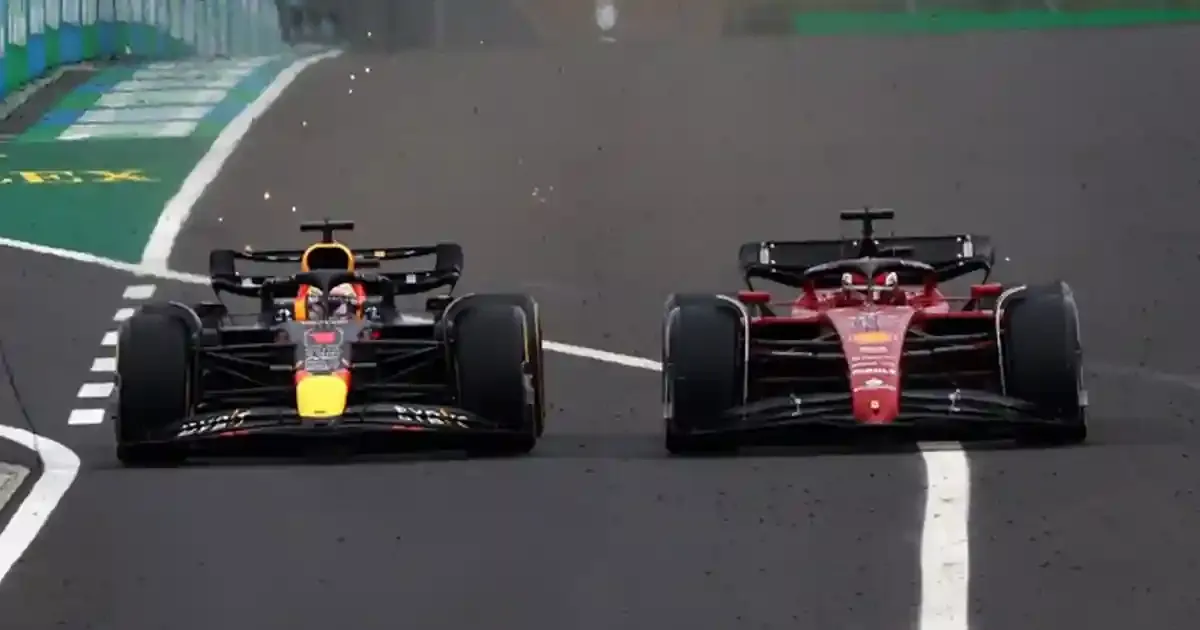
Courtesy: F1
Drag reduction system, is a simply outstanding and much vital mechanism with which a driver that is pursuing a car or driver out in front can actually achieve the feat or spectale of passing that very car and driver.
In layman terms, the DRS is an added bonus for most F1 drivers, rather for ever single F1 driver and it is the much-needed boost with which a car trailing the one out in front can attempt to blitz it or pass it.
How does it work and where does the DRS zone lie on any F1 track- we need to delve deeper to get a proper understanding of it all!
Below are some of the salient features of DRS in F1
DRS zones
Every Formula 1 track, anywhere in the world and those on the featured calendar each year, consists of what are called the DRS Zones or the Drag Reduction Zones.
There are specific sections on each F1 circuit layout track where the designated DRS zones can be activated and therefore, come to aid drivers by helping them improve their speed.
What must be noted, however, is that most F1 tracks - generally speaking- consist of a DRS zone on the straights. That is usually the prevailing scenario and has been for the longest time possible.
DRS detection zone
What comes before a DRS zone is a DRS detection zone in an F1 race. If the F1 driver pursuing the car in front in within or inside one second to (in terms of gap) to the driver out in front, then one is considered eligible to be using the DRS. Therefore, the gap between the drivers holds the key to the usage of the DRS.
How to activate the DRS
The driver that needs or wants to apply the DRS can simply opt for that by pressing a button on his car’s steering wheel, and the moment it is done, it opens a flap on the rear wing of that particular car.
Once drag is reduced, it tends to increase the car's speed
What happens when the flap on the rear wheel opens? It’s a question that’s too common and has a simple answer as well.
The drag or the aerodynamic drag is reduced. And that allows the car to reach or hit top speed on the straight (where the DRS zone is located), which ultimately aids I’m catching up to the car in front or ahead. But again, whether a driver successfully manages to overtake or pass the car in front by applying the DRS also depends on individual skill and timing.
How does DRS get deactivated or how does a driver deactivate the DRS?
Now, having said the above, it also ought to be noted that the DRS actually gets automatically deactivated when the driver hits the brakes or tends to lift off the throttle. Even if the driver presses the DRS button again, the phenomenon gets deactivated.
Are there any DRS restrictions?
It must be noted that no driver anywhere on any F1 track can apply the rule of the DRS or get it to function in the first two or opening two laps of a contest or Grand Prix.
That’s simply not allowed.
At times, the race director can also deactivate the usage of the DRS, especially where or when it’s rainy conditions or in the situation where there’s actually a yellow flag scenario out there in the Grand Prix, which can occur any moment given the unpredictable nature of Formula 1.
In effect, what DRS does is that it simply allows a car that is trialing a car in its front to try and close that gap and even potentially move ahead in front of it. This happens on the straights on the F1 circuit or track. It is, at the end of the day, about gaining a slight speed advantage. Isn’t it?




